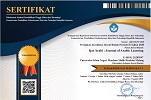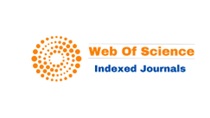Applied Study Of The Processability Theory OF Arabic Learners In The Islamic University Of Madinah/ دراسة تطبيقية لنظرية قابلية المعالجة على مجموعة من متعلمي اللغة العربية في الجامعة الإسلامية بالمدينة المنورة
Abstract
Keywords
Full Text:
PDFReferences
Al-Hazmi, Muhammad Dhafer. Jerobianism As A Result Of Interlingual Contact 304 - 341, Issue - 18 (Taybah University Journal of Arts and Humanities, Seventh Year) 1440.
Al-Obaidi, Bashir 2015. Experiences in Teaching the Arabic Language in Europe: Presentation and Evaluation, King Abdullah bin Abdulaziz International Center for Arabic Language Service: Riyadh.
Chomsky, N. 1980. Rules and Representations. Behav. Br. Sci., 3, 1-61.
Clahsen, H. 1985. Parameterised Grammatical Theory And Language Acquisition. A Study of the Acquisition of Verb Placement and Inflection by Children and Adults”. In S. Flynn and W. O’Neil (Eds.), Proceedings of the workshop “Linguistic theory and second language acquisition”. Cambridge Mass.:MIT Press.
Edward P. Stabler 1984. Berwick and Wienberg on linguistics and computational psychology. Cognition, 17 (2): 155-179.
Marr. D. 1979. Representation and computing visual information. In P.H. Winston and R.H. Brown (sds.) Artificial Intelligence: An MIT Prespective, Vol. 2. Cambridge, MA, MIT Press.
Owens, Jonathan. 2023. Arabic and the Case Against Linearity in Historical Linguistics, Oxford University Press: Oxford.
Pienemann, M. (1998). Language processing and second language development: Processability theory. Amsterdam/Philadelphia: John Ben jamins.
Stern, H. 1991. Fundamental Concepts of Language Teaching, first published 1983, Oxford University Press: Oxford.
Wardhaugh, R. 1969a. Teaching English to Speakers of Other Languages: The State of the Art. Washington, D.C.: ERIC Clearinghouse for Linguistics. [108,11S(n 7)]
Winford, Donald 2006. Reduced syntax in (prototypical) pidgins. In Ljiljana Progovac, Kate Paesani, Eugenia Casielles, & Ellen Barton (eds.), The syntax of non-sententials. 283–307. Amsterdam: Benjamins.
Yule, George. 2017. The Study of Language, translated by Hamza Al-Muzaini, Jawadul for Publishing, Translation and Distribution: Beirut.
Alasmari, M., Qasem, F., Ahmed, R., & Alrayes, M. (2022). Bilingual teachers’ translanguaging practices and ideologies in online classrooms in Saudi Arabia. Heliyon, 8(9), e10537. https://doi.org/10.1016/j.heliyon.2022.e10537
Alhazmi, M. Z. (2016). Maritime Terminology of the Saudi Arabian Red Sea Coast. De Gruyter. https://doi.org/10.1515/9783112209264
Al‐Jallad, A. (2020). ʿArab , ʾAʿrāb , and Arabic in Ancient North Arabia: The first attestation of (ʾ)ʿrb as a group name in Safaitic. Arabian Archaeology and Epigraphy, 31(2), 422–435. https://doi.org/10.1111/aae.12157
Arifin, Z., Hasan, M. R., & Haqqi, A. R. A. (2022). Qat’i And Zanni Debate From The Perspective Of Qur’anic Studies. QiST: Journal of Quran and Tafseer Studies, 2(1), 63–67. https://doi.org/10.23917/qist.v2i1.1248
Azizah, N., Basthomi, Y., & Subianto, A. (2021). Syntactic Analysis of Surah Qaf English Translation by Muhammad Taqiudin Al Hilali and Muhammad Muhsin Khan. JoLLA: Journal of Language, Literature, and Arts, 1(2), 239–250. https://doi.org/10.17977/um064v1i22021p239-250
Dahia, I., & Belbacha, M. (2024). International Journal of Linguistics, Literature and Translation Machine-Learning-based English Quranic Translation: An Evaluation of ChatGPT. https://doi.org/10.32996/ijllt
Izzah, N., Ghozali, M., Suhaili Mansor, N., Awang, H., & Yusof, S. M. (2024). Automated Translation Tools For Mualaf: Artificial Intelligence Solutions For Accessing Islamic Texts And Resources Across Languages Creative Commons Attribution 4.0 International. International Journal of Islamic Theology and Civilization E-ISSN, 2(3), 3009–1551. https://doi.org/10.5281/zenodo.13943175
Layth, A., & Muhammed, N. (2006). Supplemental Coherence as a Cause of Ambiguity in English Quranic Translation: Al-Qariah Surah as a Case Study. In Pickthal.
Mamasadikova, M., & Qizi, Q. (2024). The Functions Of Sentence Types In The English Language ENGLISH LANGUAGE. https://scientific-jl.org/
Mukhtar, S., & Sani Abdulkadir, Z. (2023). The Significance of English Language and its Relevance to the Preservation of the Qur’anic Script. 1. https://doi.org/10.59479/jiaheri.v1i001.38
Roodashsty, M., Amin Mozaheb, M., & Ghajarieh, A. (2023). Translation of Culture-Specific Items in Three Chapters of the Holy Quran: The Case Study of Translators with Different L1 Backgrounds. 1(1). https://doi.org/10.30497/ISQH.2023.244736.1005
Sari, W. A., & Ariyanti, T. D. (2022). Language Acquisition (Types of Sentence) of Three to Four Years Old Children. Disastra: Jurnal Pendidikan Bahasa Dan Sastra Indonesia, 4(1), 20. https://doi.org/10.29300/disastra.v4i1.4718
Tarmizi, S. A., & Saad, S. (2022). Named Entity Recognition For Quranic Text Using Rule Based Approaches. Asia-Pacific Journal of Information Technology and Multimedia, 11(02), 112–122. https://doi.org/10.17576/apjitm-2022-1102-09
Versteegh, K. (2015). An empire of learning: Arabic as a global language. In Language Empires in Comparative Perspective (pp. 41–54). DE GRUYTER. https://doi.org/10.1515/9783110408362.41
Wazery, Y. M., Saleh, M. E., Alharbi, A., & Ali, A. A. (2022). Abstractive Arabic Text Summarization Based on Deep Learning. Computational Intelligence and Neuroscience, 2022, 1–14. https://doi.org/10.1155/2022/1566890
Zekkour, H., & Imamuddin, I. (2024). Methods of Understanding the Quran and Hadith from Ancient Times to Modern Times. Journal of Education and Teacher Training Innovation, 2(2), 102–109. https://doi.org/10.61227/jetti.v2i2.112
DOI: https://doi.org/10.18860/ijazarabi.v8i1.29356
Refbacks
- There are currently no refbacks.
Copyright (c) 2025 Muhammad Zafer Alhazmi
License URL: https://creativecommons.org/licenses/by-sa/4.0/













